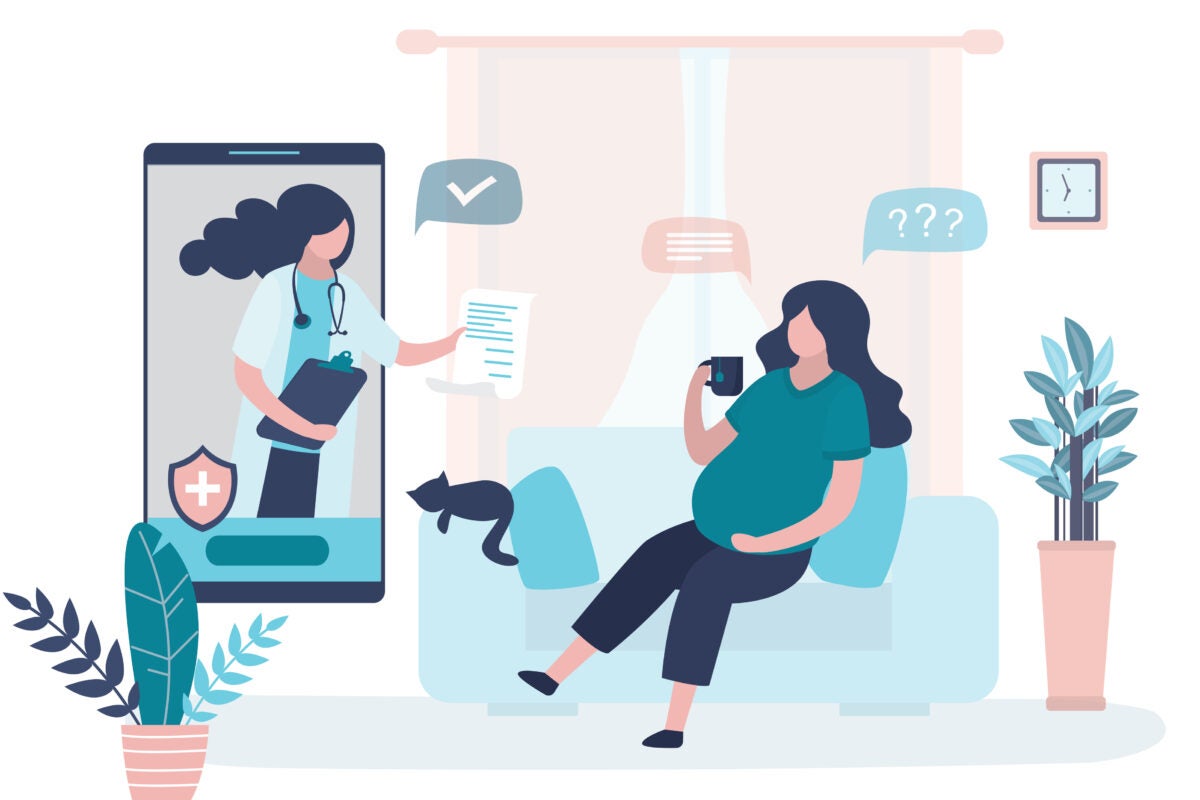The Chat Will See You Now
Initial screenings by online Q&A platforms can steer patients to the right care and lead to more doctor visits, in person and online
Based on the research of Ashish Agarwal and Guoming Lai

Five years ago, during COVID-19 pandemic shutdowns, much of medical care went virtual. For 48% of Medicare users, some appointments turned into webcam visits, according to the Center for Medicare and Medicaid Services. In 2024, 25% still had at least one telemedicine visit.
But one promising form of telemedicine is underutilized in the U.S., compared with countries such as England and China, according to new research from Texas McCombs: initial question-and-answer evaluations. For a fee less than the cost of a full visit, a doctor can begin the diagnosis and referral process, based on a patient’s written or recorded responses.
Ultimately, the research finds, such screenings help more patients see doctors in person and promote better health outcomes. “It turns out that it does a better match,” says Ashish Agarwal, professor of information, risk, and operations management. “You go to the right doctor, and it helps you in the long run.”
Such Q&A platforms, such as Teladoc and Doctor on Demand, most often use text. A person with a medical issue gets paired with a doctor who determines what type of care is most appropriate: such as a real-time virtual consultation or an offline visit. The chat might include a patient’s images sent to the doctor and a diagnosis, but it’s not meant as a substitute for specialized medical care.
Agarwal and fellow IROM professor Guoming Lai analyzed data from a Chinese health care platform that was launching a Q&A service. “The platform was grappling with the issue that we have a lot of doctors, we have a lot of patients, and we want to improve the matching process,” Agarwal says.
With Yixuan Liu of China Europe International Business School, Shanghai, and Weihua Zhou of Zhejiang University, Hangzhou, the researchers looked at whether Q&A chats ended up as substitutes for medical care, cannibalizing from offline visits and online consultations.
The opposite turned out to be true. After Q&As, the analysis showed, patients were more likely to follow up with a visit to a clinic or hospital or to schedule a virtual appointment.
- Q&A services increased online consultations with doctors by 2% and increased offline appointments by 4.3%.
- Patients spent 6.6% more on online consultations after having engaged with a doctor on a Q&A platform.
The reason is that Q&As armed patients with better information, Agarwal says. “When it comes to medical issues, you’re dealing with complex information. Sometimes you don’t even know what you’re looking for. That is where a service like this is very useful.”
The Q&As also had spillover effects, leading more patients to seek care from other doctors or specialists in addition to the ones they initially engaged with. Agarwal hopes the results might encourage more doctors to participate in such platforms, making it easier to match a patient with the right doctor.
A future possibility is automated service, he says. Artificial intelligence might engage in the initial conversation or assist a doctor in their assessment. By using AI to help triage care for patients, platforms might help to alleviate the challenge of matching with live doctors.
“If you are using an AI agent, it can scale up,” he says. “So maybe the concern about matching would not be there.”
“On-Demand Healthcare Platforms: Impact of Question and Answer Service on Online Consultations and Offline Appointments” is published in Information Systems Research.
Story by Omar Gallaga
About this Post
Share:


